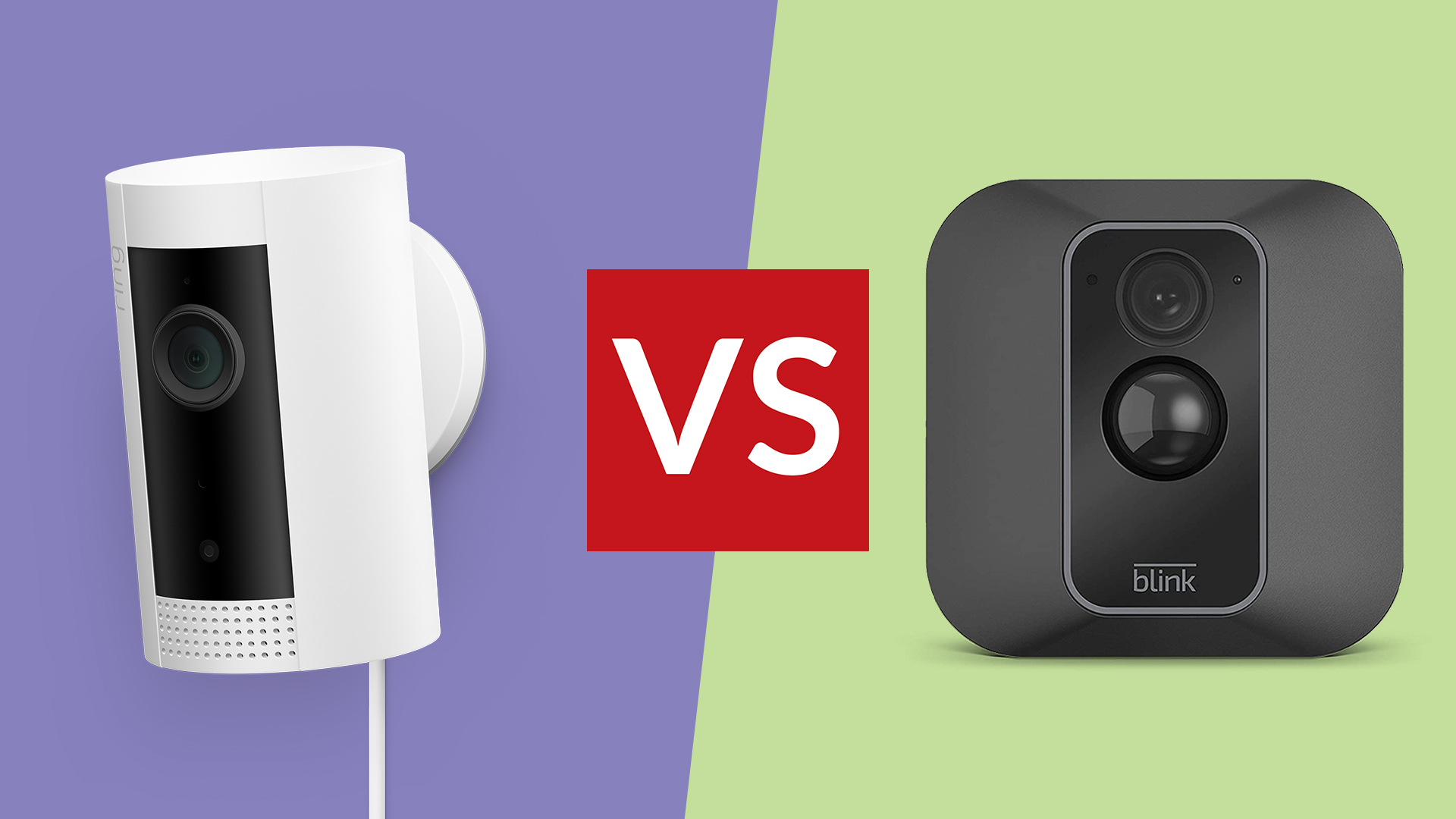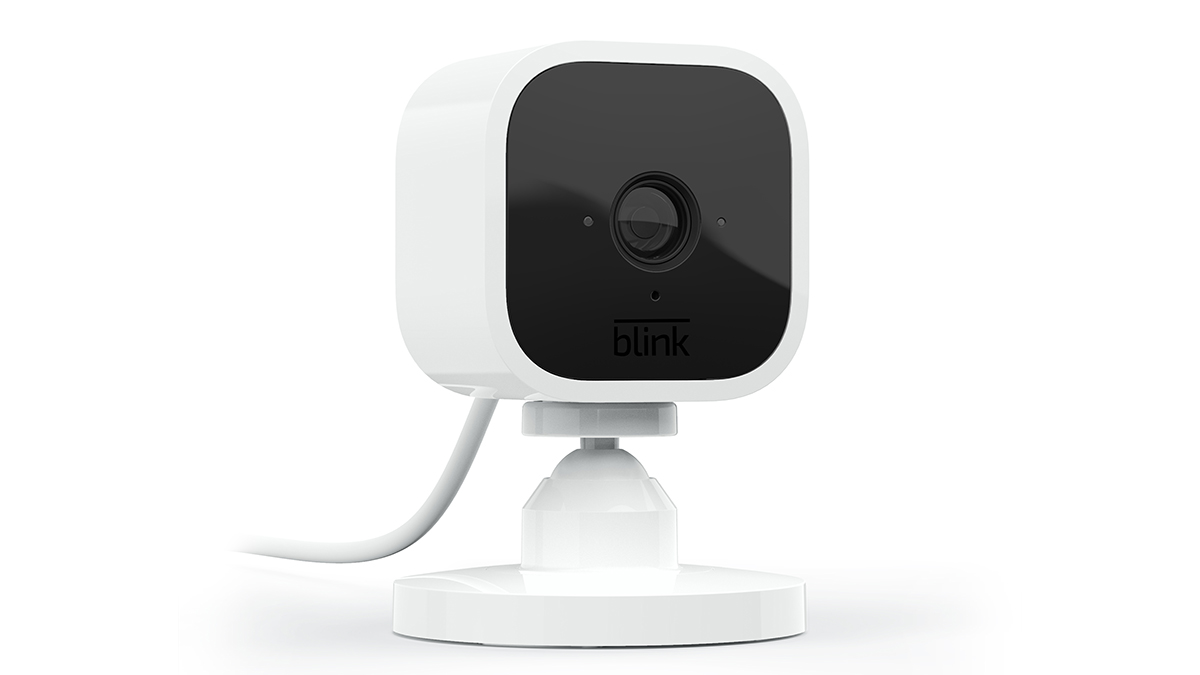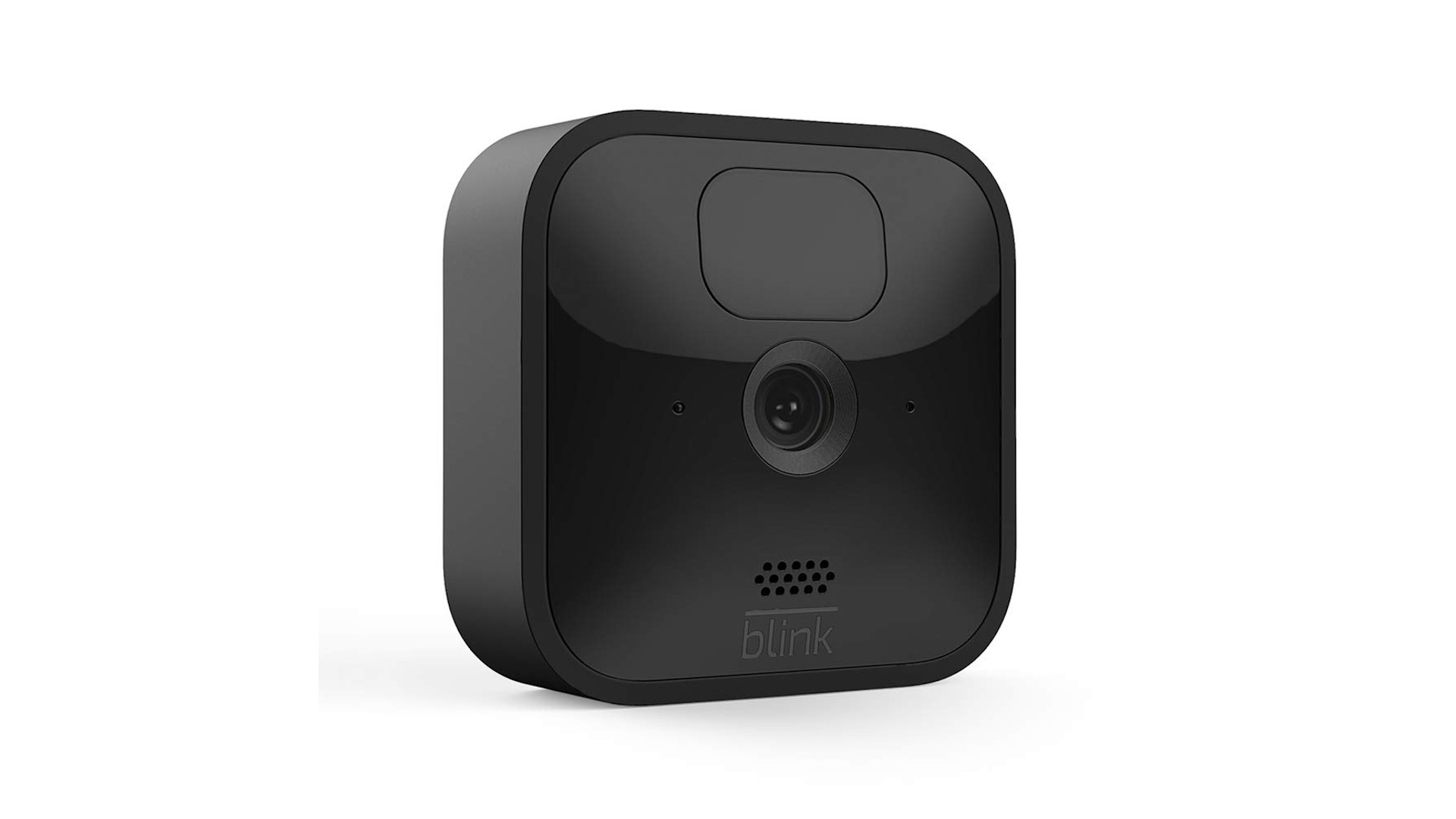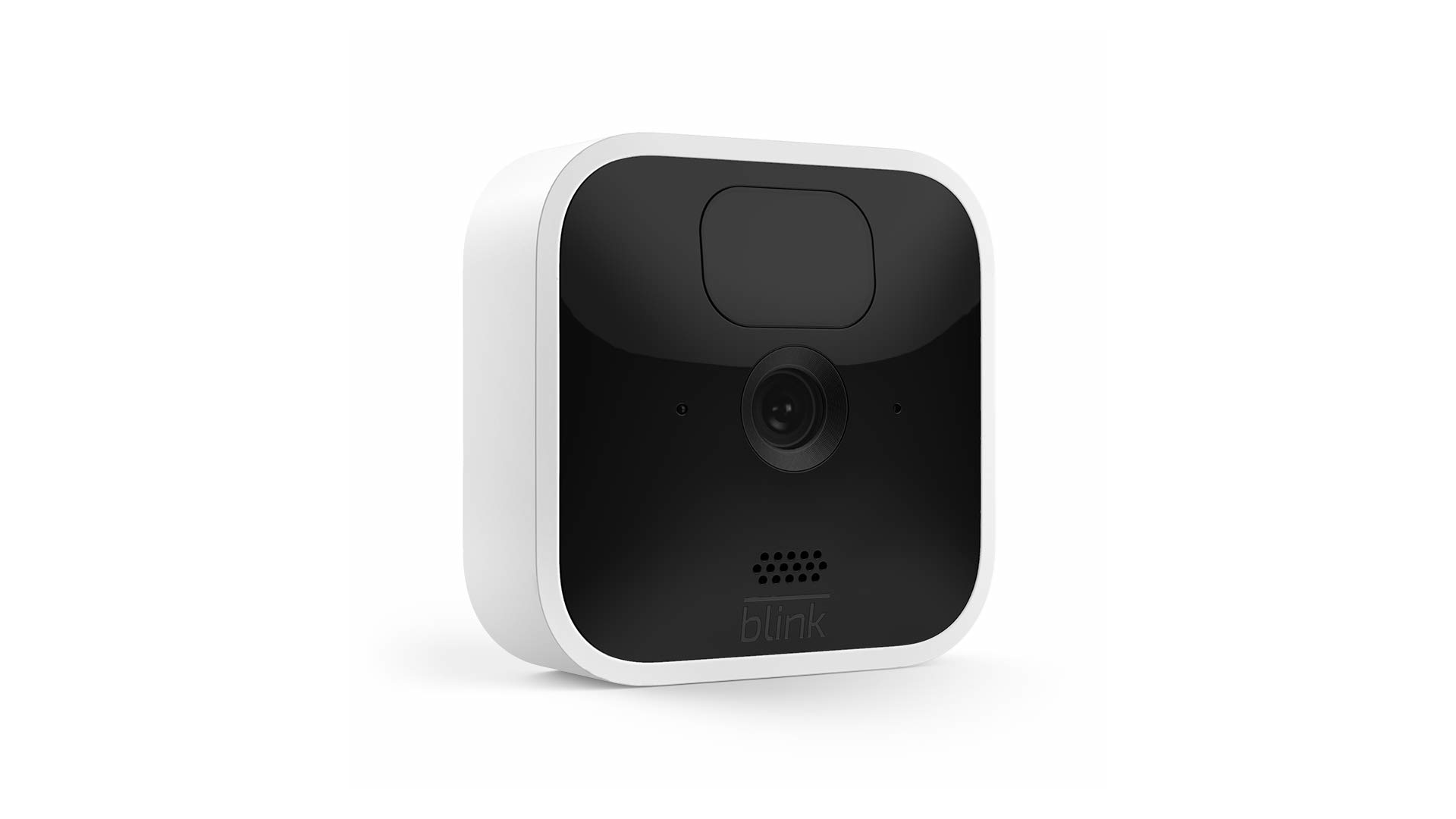
Of all the pies Amazon has its fingers in, making many of the best security cameras is one of the juiciest; if you're struggling to pick a side in the battle of Ring vs Blink – and, yes, both brands are owned by the retail giant – we'll help you decide on the most delicious security system slice.
It's not a cut and dried decision. Both occupy slightly different spaces in the security market, Blink opting to dominate the low-cost, low-effort sector; Ring offering some more advanced features and more complex hardware. There's a good case to be made that either is a good investment for protecting your home, both inside and out.
These two aren't the only options, of course – see our guide above for more, or our list of the best cheap security cameras for budget options.
But this is about Ring butting heads with Blink, essentially Amazon taking a run up, sprinting headlong and locking horns with itself. Which should you choose in 2023? Let's break them down and detail exactly what each delivers.
- Going outdoors? Best outdoor security cameras
- Searching for more security? Best smart security devices
- Add smarts to your front door: Best smart locks

Ring Stick Up Cam Battery
Ring vs Blink: Price
Cost is traditionally an area Blink has had sewn up, but the newest generation of its cameras pulls the price far closer to Ring that you might think. Mostly.
Blink does win inside the home. Its smallest cam, the Blink Mini, has an extremely reasonable official price of £35/$35, which is far cheaper than anything Ring offers - and discounts frequently take it £10/$10 below that point. The Ring Indoor mostly matches the Blink Mini in terms of specs, but as it retails for £49/$59 you'll find filling your home with cameras isn't quite as cheap.
The price is a little closer if you're looking to go wireless, with a single Blink Indoor retailing at £69/$79 next to the Ring Stick Up Cam's £89/$99. But the Stick Up Cam is weatherproof, too: if you want to put Blink cameras outdoors, you'll need to opt for the more expensive Blink Outdoor, which now comes in at the same price as the Stick Up Cam before any potential discounts.
Get all the latest news, reviews, deals and buying guides on gorgeous tech, home and active products from the T3 experts

Blink Mini
Ring vs Blink: Running costs
Both systems will alert you and allow you to jump into a live view without any kind of subscription, so if that's all you're looking for you can safely buy whatever hardware works. This may be particularly relevant if you're only looking for, say, a Ring Video Doorbell – but it's not too helpful if evidential security is your goal.
Blink's big selling point was once that you didn't need a subscription at all to put footage in the cloud, although that idea seems to have been abandoned for the latest devices. You can, if you like, store everything on USB storage attached to the Blink Sync Module 2 (at press time this is a pre-order item on its own, but included with packs of Blink Indoor or Outdoor cams) but to put footage in the cloud you'll need a subscription which starts at £2.50/$3 per month for a rolling 2 hours' storage from a single camera, or £8/$10 per month for as many cameras as you need.
Ring's Protect Plans are the only way to store footage with Ring gear, and they're priced exactly the same as Blink's. That said, there are slight differences in what you get: the Ring limit appears to be 30 days' storage of footage rather than a rolling two hours, which is a slightly better deal, and signing up also nets you theft protection on your hardware, so if the camera is what they take, you get a replacement.

Ring Spotlight Cam Wired
Ring vs Blink: Range and features
Blink's range consists of everything we've mentioned so far: the Mini, the Indoor, the Outdoor, and the Sync Module. But that's where the list ends. It's a very simple, straightforward collection of cameras, with all of the core features covered – 1080p sensors, motion detection, and two-way talk – but little in the way of fundamental extras. They are, in general, small and inconspicuous. They're easy to set, forget, and move on.
Ring's cameras are similarly decent, but the big difference is that its output covers vastly more segments of the security space. In addition to wired, wireless and even power-over-ethernet cameras, the illuminated Spotlight and Floodlight cams make for a great combination for a back garden or side entrance – and the Spotlight Cam comes in wired, battery and solar variations for extra flexibility. There's an extensive selection of video doorbells, the line which gave the company its name in the first place. Ring even markets even a full-on alarm system, with everything from infrared sensors to window and door openings sensors available to complement its cameras. If it's a full security solution you're after, Ring is the way to go.
This is doubly true when it comes to detection functionality. Blink looks for motion, while Ring can pull off person recognition, which cuts down on false alerts.

Blink Outdoor
Ring vs Blink: Battery life
With free storage no longer an advantage, the utter convenience of Blink's mammoth battery becomes the range's real key feature: the company says you should get two years from its wireless cams on a single set of decent AA batteries, as long as the motion features aren't too frequently triggered. Two years without any kind of maintenance is a great deal, particularly if you're mounting outdoor cameras on a high perch.
Ring's non-wired cameras don't tend to last nearly that long – our review of the Stick Up Cam noted a drop of between 5-10% a week – although solar versions of the Spotlight Cam and Stick Up Cam can, if their panels are placed in the right location, trickle charge enough to keep them running (theoretically) in perpetuity. The Ring Quick Release Battery offers an opportunity for a speedy switch, and charges via its own little micro-USB port for convenience.

Ring Indoor Cam
Ring vs Blink: App
Ring's app and Blink's app each reflects the breadth of its offering. The Ring app gives you more options, given that its range is far more varied; Blink's app is a more rudimentary system, but that's not to say it isn't useful – it's fine for pulling up a live view when you need it.
Both systems can link in with your smart home gear, too, as long as you've built it on certain lines. Pulling up a live view on an Echo Show or Fire TV Stick is possible with either brand. Those invested in Google or Apple, though, will likely be unsurprised to learn that Amazon's security brands prioritise Amazon's smart home offerings, and offer little to no interaction with the others.

Blink Indoor
Ring vs Blink: Overall
The best budget security system is going to be the one that suits what you want to get out of it. Blink is still the cheaper of the two, by a small margin, and if all you're looking for is some set-and-forget cameras that require the minimum of your attention, it's probably the one to go for.
But only just, and only if you're sure you're never going to want to expand your security net any further. Ring's massive range of options, and the fact that many of its more basic cameras really aren't far removed from Blink's in terms of their price, means it's a great choice whether you're content with one camera or eight.
T3 magazine's own Gadget Guru is a 25-year veteran of the tech writing wars, and has the scars to prove it. He's written for the UK's biggest technology publications, and knows everything from smart doorbell voltage needs to how to bend Windows to his every whim.

